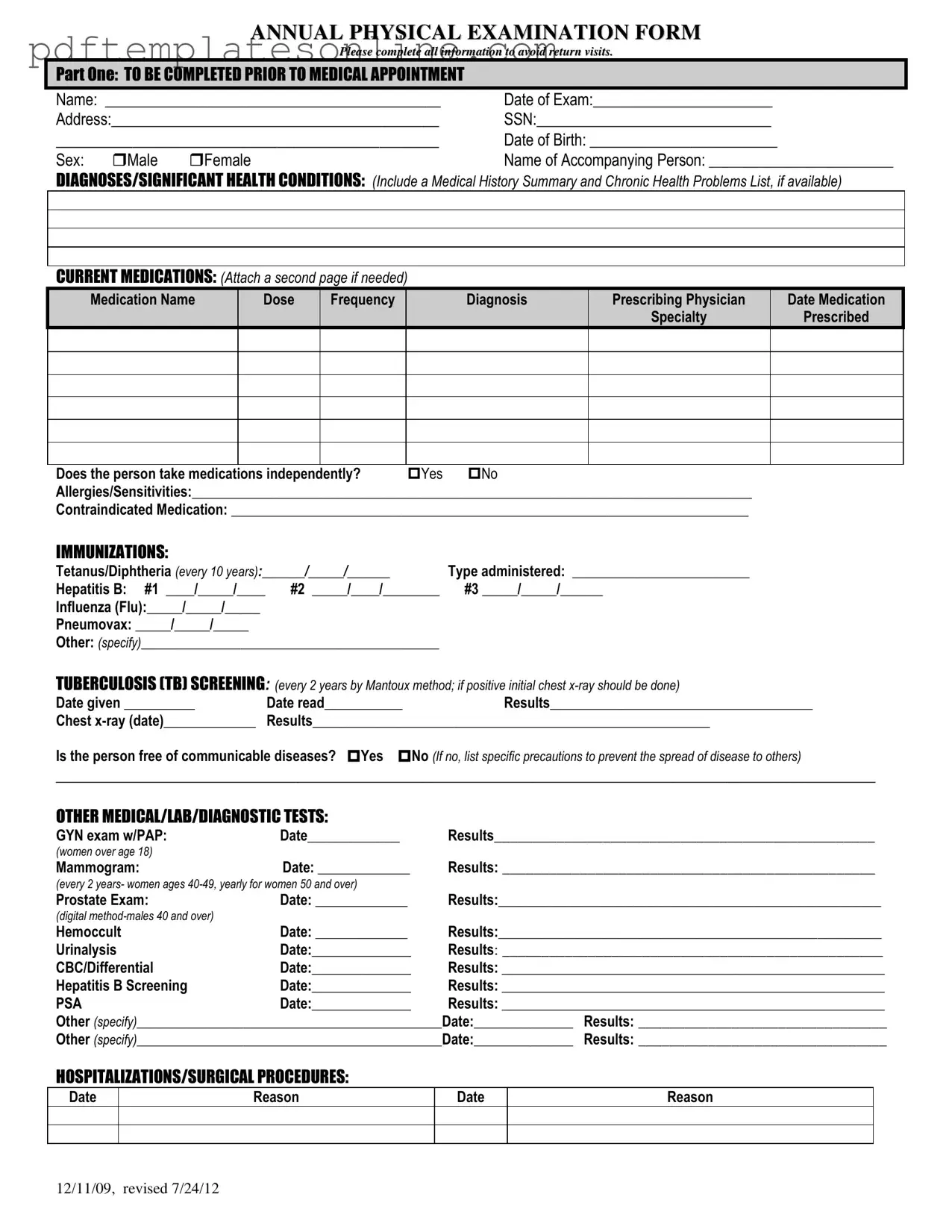Blank Annual Physical Examination Form
The Annual Physical Examination Form is a crucial document designed to gather comprehensive health information before a medical appointment. It ensures that healthcare providers have all the necessary details to assess a patient's health accurately. Completing this form thoroughly can help avoid additional visits and streamline the examination process.
Access Annual Physical Examination Editor Now
